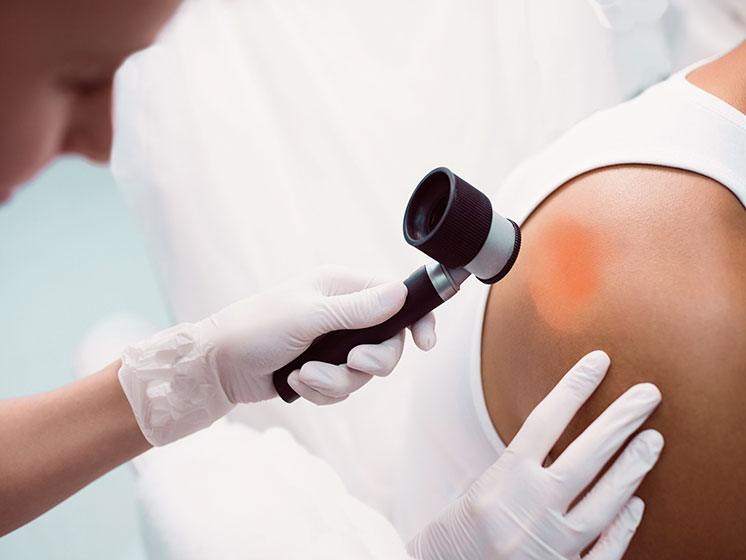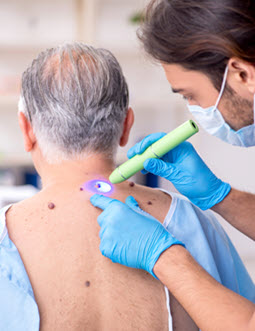Find solutions for your hair loss issues with guidance from an experienced hair care specialist.
Find solutions for your hair loss issues with guidance from an experienced hair care specialist.
Blog Article
Navigating Skin Cancer Treatment: The Crucial Function of Mohs in Modern Dermatology Practices
Skin cancer cells, a challenging medical diagnosis, commonly leaves clients facing countless therapy choices. Among these, Mohs surgical procedure stands as a sign in contemporary dermatology, renowned for its thorough approach to cancer elimination and preservation of bordering healthy cells. This innovative practice assures not just superior cosmetic outcomes yet also offers instant outcomes, relieving client anxiety. As we check out the details of this procedure, one will certainly appreciate its crucial function in skin cancer treatment.
Comprehending Skin Cancer: Types and Threats
Skin cancer cells, a potentially deadly ailment, is even more prevalent than several people understand. This illness, brought on by the uncontrolled growth of abnormal skin cells, mostly results from DNA damages because of direct exposure to the sunlight and ultraviolet (UV) light. There are three major types of skin cancer cells: Basic cell carcinoma, Squamous cell carcinoma, and Melanoma. While the previous two are much less deadly and comprise the bulk of diagnosed cases, melanoma is one of the most hazardous. It makes up only concerning 1% of skin cancer cells situations however creates the vast majority of skin cancer deaths - hair loss. Threat aspects consist of reasonable skin, history of sunburn, excessive sunlight direct exposure, living at high altitudes or near the equator, having several moles, a household background of skin cancer, and compromised body immune system.
What Is Mohs Surgical treatment and Just How It's Transforming Skin Cancer Cells Therapy
Despite the various therapies presently available for skin cancer cells, Mohs surgical treatment stands apart as a groundbreaking and extremely reliable option. Called after Frederic E. Mohs, the doctor that established the treatment, Mohs surgical treatment is an exact surgical method used to treat skin cancer cells. Throughout the treatment, slim layers of cancer-containing skin are progressively removed and taken a look at until only cancer-free tissue continues to be. This approach allows the cosmetic surgeon to verify that all cancer cells have been gotten rid of at the time of surgical procedure. This level of precision, integrated with the capacity to spare as much healthy tissue as possible, my response is reinventing skin cancer cells treatment. Therefore, Mohs surgical treatment has actually become a foundation of modern-day dermatology practices.
The Advantages of Mohs Surgical Treatment Over Standard Skin Cancer Cells Therapies
Structure on the innovative nature of Mohs surgery, it's critical to consider its various advantages over typical skin cancer cells treatments. Unlike typical treatments, Mohs supplies a greater remedy rate, frequently reaching 99% for novice treatments and 94% for recurrent cancers. Furthermore, it reduces damage to healthy skin, leading to much less scarring and boosted cosmetic outcomes.
The Treatment of Mohs Surgical Procedure: What to Anticipate During the Process

Potential Side Impacts and Post-Operative Treatment of Mohs Surgery
Undertaking Mohs surgery, like any type of other procedure, entails prospective adverse effects that clients ought to know. Usual adverse effects include pain, bruising, and swelling at the surgery website. However, these are typically short-term and convenient with over-the-counter discomfort medicine and ice packs. In rare situations, clients may experience infection, bleeding, or an allergy to the local anesthetic. Post-operative treatment is crucial to recovery and minimizing adverse effects. This normally involves maintaining the injury tidy and completely dry, taking prescribed medications, and preventing arduous tasks. People should also go to all follow-up appointments for injury investigate this site treatment and monitoring. Sometimes, added treatments may be needed to make certain complete removal of the cancerous cells. Sticking to these post-operative treatment guidelines can considerably improve healing and outcomes.
Conclusion

Report this page